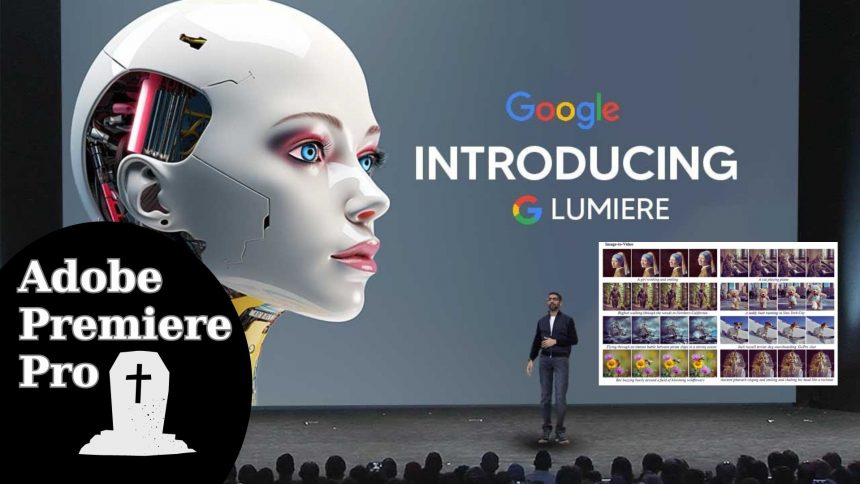In the ever-evolving landscape of artificial intelligence, Google has once again raised the bar with its latest creation – Lumiere. This cutting-edge AI video model boasts the remarkable ability to craft videos with realistic and diverse motion, marking a significant leap forward in the field. Lumiere stands out for its unparalleled features, such as text-to-video and image-to-video capabilities, along with the power to animate and stylize content from existing images.
To comprehend the groundbreaking capabilities of Lumiere, it is essential to delve into the research that underpins its prowess. The research paper, titled ‘Lumiere A Space-Time Diffusion Model for Video Generation,’ serves as the foundational framework for this innovative AI video model. Within the pages of this paper, Google researchers elucidate the scientific intricacies behind Lumiere’s ability to revolutionize video synthesis.
At the heart of Lumiere’s technological marvel lies the Space-Time U-Net architecture. This sophisticated framework represents a paradigm shift in video generation by enabling the model to produce the entire temporal duration of a video in a single pass. Unlike conventional AI video models that synthesize distant keyframes one at a time, Lumiere’s Space-Time U-Net architecture ensures global temporal consistency. This means that the model can generate coherent representations across different frames, contributing to the lifelike and seamless motion observed in the generated videos. The significance of this innovation cannot be overstated, as it marks a departure from traditional approaches, offering a more efficient and comprehensive solution to the challenges posed by video synthesis.
Lumiere’s ability to bring text and images to life in the form of dynamic videos is a testament to its advanced video generation process. The model employs a dual approach, excelling in both text-to-video and image-to-video transformations, setting it apart as a versatile tool in the realm of artificial intelligence.
At the core of Lumiere’s video generation prowess is the SpaceTime Diffusion model. This innovative framework operates by synthesizing videos through a diffusion process, a departure from traditional methods that generate distant key frames sequentially. The SpaceTime Diffusion model distinguishes itself by generating the entire temporal duration of a video in a singular pass through the model. This approach not only enhances efficiency but crucially contributes to global temporal consistency, ensuring that the generated videos maintain a coherent representation across different frames.
To illustrate Lumiere’s capabilities, examples from the research paper offer compelling insights into its performance. In text-to-video transformations, Lumiere exhibits promising consistency and accuracy in portraying a diverse array of scenes. Whether translating textual descriptions into vivid visual narratives or animating existing images, the model showcases a remarkable ability to create realistic and dynamic content. The image-to-video transformations demonstrate impressive animations, with the model seamlessly incorporating the temporal dimension to breathe life into static images.
In the rapidly evolving field of artificial intelligence, benchmarking a novel model against existing state-of-the-art counterparts is pivotal in gauging its true prowess. The team behind Lumiere conducted a comprehensive comparison, evaluating its performance in both text-to-video and image-to-video generation against established models in the industry.
Lumiere’s standout performance becomes apparent when considering its video quality and text alignment metrics. The team’s meticulous analysis showcased Lumiere’s superiority in these crucial aspects compared to its contemporaries. In terms of video quality, Lumiere demonstrated a remarkable ability to produce videos with realistic and diverse motion, setting a new standard for the industry. This leap in quality suggests that Lumiere could potentially redefine the expectations for AI-generated video content.
Moreover, Lumiere’s proficiency in text alignment further solidifies its position as a leading model in the realm of text-to-video generation. The precision with which Lumiere translates textual descriptions into visually accurate and coherent video sequences underscores its advancements in understanding and interpreting input data.
The unveiling of Lumiere introduces a myriad of potential use cases, promising to reshape the landscape of content creation and unleash newfound possibilities for users. Here are key areas where Lumiere’s capabilities could have a transformative impact.
Effortless Hollywood-Style Movies
Lumiere’s user-friendly text-to-video and image-to-video transformations pave the way for individuals, regardless of their filmmaking expertise, to create Hollywood-style movies with unprecedented ease. The ability to seamlessly translate text descriptions or animate existing images into coherent and realistic video sequences democratizes the filmmaking process, making it accessible to a broader audience.
Diverse Content Creation
Beyond filmmaking, Lumiere’s capabilities extend to diverse content creation, from marketing videos to educational content. The model’s proficiency in generating high-quality, dynamic visuals from textual or image inputs opens up avenues for a wide range of creative endeavors. This democratization of content creation may empower individuals and businesses to express ideas in innovative ways.
Advanced Simulations
The implications of Lumiere go beyond traditional content creation, extending into the realm of advanced simulations. The model’s ability to generate realistic and diverse motion in videos has the potential to enhance simulations in various fields, such as virtual reality, training scenarios, and scientific simulations. This could contribute to more immersive and effective training programs across industries.
Biases and Ethical Considerations
Acknowledging the transformative potential of Lumiere, the research team prudently addresses the risk of misuse and the importance of ethical considerations. The model’s capacity to create highly realistic content raises concerns about the potential for generating fake or harmful material. The team’s commitment to developing tools for detecting biases and malicious use cases reflects a conscientious approach toward ensuring the responsible and ethical use of this powerful technology.
Human-AI Collaboration
Lumiere could foster a new era of collaboration between humans and AI in the creative process. As users leverage the model’s capabilities to generate initial visual content, they may then refine and enhance the results, leading to a symbiotic relationship between human creativity and AI-driven synthesis.
As of now, Lumiere stands as a technological marvel, showcasing its capabilities in AI-driven video synthesis. However, it is important to note that the model is not currently available for public access or download. Despite this, industry experts are already contemplating the potential impact of Lumiere on Google Bard’s multimodal capabilities.
Experts in the field speculate that Lumiere, with its advanced video generation capabilities, could play a pivotal role in enhancing Google Bard’s existing multimodal capabilities. The integration of Lumiere into Google Bard could potentially amplify the platform’s capacity to understand and generate content across various modalities, combining text, images, and now, seamlessly generated videos. This integration could open up new frontiers in creative expression and storytelling within the Google Bard ecosystem.
In conclusion, Lumiere emerges as a groundbreaking innovation in the realm of AI-generated content. Its unique features, such as text-to-video and image-to-video transformations, propelled by the SpaceTime Diffusion model, signify a transformative leap in video synthesis technology. The model’s potential use cases span from democratizing filmmaking to contributing to advanced simulations and diverse content creation.
The primary goal articulated by the research team is to empower novice users to creatively and flexibly generate visual content. However, the awareness of the risk of misuse is evident, and the team emphasizes the need for developing tools to detect biases and mitigate malicious use cases. This conscientious approach underscores the responsibility that comes with the deployment of powerful AI technologies.



